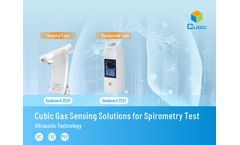Refine by
Cardiopulmonary Articles & Analysis
14 articles found
High-performance cardiopulmonary resuscitation (HP-CPR) is a technique that emphasizes delivering chest compressions at the correct depth and rate while avoiding excessive leaning and minimizing interruptions. ...
The cardiopulmonary system is recognized as one of the most essential physiological systems in the human body, with the responsibility of efficiently distributing blood and oxygen to every organ. The cardiopulmonary system is closely linked to human health. Therefore, pulmonary function testing is crucial for both disease prevention and diagnosis.Since different ...
CPR training is more than just a certification; it’s a crucial skill that can save lives in critical situations. In Kentucky, where industries range from manufacturing to healthcare, the demand for comprehensive CPR and first aid training is ever-present. The different levels of CPR training are designed to meet specific needs – from basic techniques for laypersons to advanced ...
In Kentucky, the significance of CPR certification extends far beyond a mere qualification. It’s about empowering individuals with the ability to make a crucial difference during emergencies. Each year, situations arise where immediate and knowledgeable action is essential. Being trained in CPR means not only responding to a crisis but doing so with the proficiency and confidence that can ...
It is important for employers to know the wind chill temperature so that they can gauge workers’ exposure risk better and plan how to safely do the work. It is also important to monitor workers’ physical condition during tasks, especially new workers who may not be used to working in the cold, or workers returning after spending some time away from work. The National Oceanic and ...
Every second counts in any emergency, particularly those involving sudden cardiac events. Training in life-saving procedures becomes pivotal in ensuring that a victim has the best chance of survival. Two terms that often surface in discussions about cardiac emergencies are CPR vs. AED training. While both aim at preserving life during cardiac crises, they serve different functions and involve ...
Vertebral compression fractures can cause thoracic deformity, abdominal compression, and affect cardiopulmonary function.(3) fragility fracturesFractures that occur non-traumatically or with minor trauma are fragility fractures, such as falls from or below standing height or from other everyday activities. ...
In times of emergencies, having the knowledge and skills to administer CPR and first aid can be the difference between life and death. CPR (Cardiopulmonary Resuscitation) and first aid training equip individuals with the tools and techniques necessary to respond effectively in critical situations. ...
Cardiopulmonary resuscitation (CPR) is a life-saving technique that can mean the difference between life and death in critical situations. ...
Trained individuals make a substantial difference in emergencies by providing urgent cardiopulmonary resuscitation in case of on-site injuries leading to medical conditions. ...
This recent study reveals that the activation of glutamatergic Chx10-derived neurons within the pedunculopontine nucleus (PPN) is the key orchestrator of global motor arrest, along with the accompanying cardiopulmonary effects. The study, which combines anatomical, physiological, and behavioral approaches, demonstrates that the activation of Chx10 neurons in the PPN of mice ...
HFJV has been shown to improve ventilation and oxygenation with potentially less effect on cardiopulmonary interactions in infants following cardiac surgery. Meliones concluded that HFJV significantly reduced Paw with a concomitant increase in cardiac output following Fontan completion. ...
The 110-bed Facility provides a wide range of specialty medical services, including cardiopulmonary rehabilitation, obstetrics, and radiology. As patient referrals to a variety of specialists continue to increase, the need for high quality, cost-effective image duplication capabilities has increased ...
Besides, by accelerating the travel speed of ambulances and shortening the average response time to 6.5 minutes, survival rate of patients could be increased and allow the EMS teams to take another 2.6 cases.Keywords: system dynamics, pre-hospital emergency medical services, resource allocation, EMT, emergency medical technicians, OHCA, out-of-hospital cardiopulmonary arrest, ...








